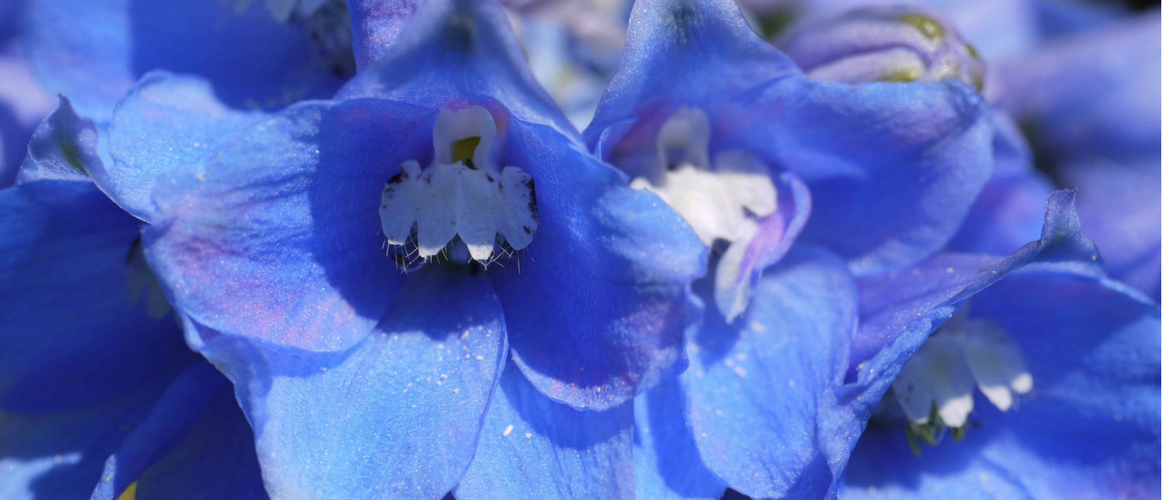
Delphinium, larkspur: 8 ideas for pairing it
Classical or more exuberant
Contents
Spectacular as a backdrop in borders, the Delphinium, larkspur or dolphin flower easily integrates into any decor, appearing classic, exuberant or sophisticated. It adds charm to English cottages and with its strong presence, it can transform a simple perennial border into a terribly chic mixed border!
Delphiniums are essential in contemporary meadow gardens, their floral spikes work wonderfully when paired with poppies, cornflowers, daisies and lupins. Their tall, structured silhouettes will also balance volumes in more orderly borders. The habits, heights, and pure colours of these perennials lend themselves to all sorts of bold combinations.
Classically, intense colours are paired with complementary hues, such as violet-blue/yellow combinations. Harmonious associations of pastel shades, white/pink, are also popular, or one can play with monochrome by using and abusing its magnificent blue tones. Perennial or annual delphiniums generally bloom during the rose season, at the end of spring and the beginning of summer, making them excellent partners for old roses, with which they create charming and romantic scenes.
Belladonna, elatum or grandiflorum, easy to combine, delphiniums bring grandeur, balance and colour to borders. Dare to reach for the heights and discover our ideas for successful combinations!
To structure a somewhat flat flowerbed
The vertical dimension provided by Delphiniums helps to structure a somewhat flat flowerbed. The tallest varieties should be planted at the back to create relief and lighten the bed. Mixed with other spikes such as those of Lupins, Veronicas, Steppe Lilies, or Valerians, they will enliven these areas by creating graphic vertical accents and adding splashes of colour. The slender spikes introduce focal points, especially when contrasted with clouds of sea thrift, airy gypsophila, or flat inflorescences like those of Achilleas. Dare to try giant varieties like the imperial Pacific ‘Blue Bird’, with its very bright medium blue, or the delphinium ‘Guinevere’, with lavender-pink flowers, reaching 2 m in height at ripeness.
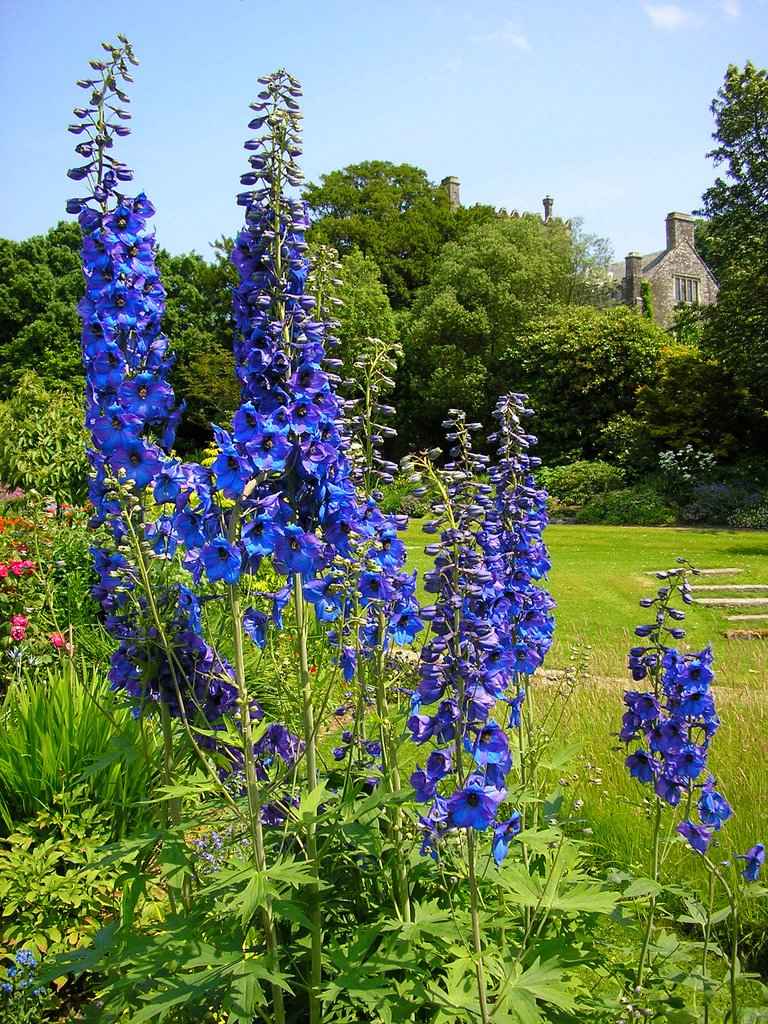
With roses for a romantic look
Delphiniums generally bloom during the rose season, at the end of spring and the beginning of summer, making them the perfect companions for old, mossy, or gallic roses, with which they create fresh and opulent spring scenes. Opt for white, pink, or lilac varieties, planted in groups of three or six, for compositions that exude simplicity. Create a springtime spectacle by pairing D. ‘Astolat’ or a white delphinium with the vibrant flowers of the Seagull climbing rose in the background. Then mix in some white astrantias, white guaras, and ‘Hidcote’ lavenders for a rich and romantic scene.
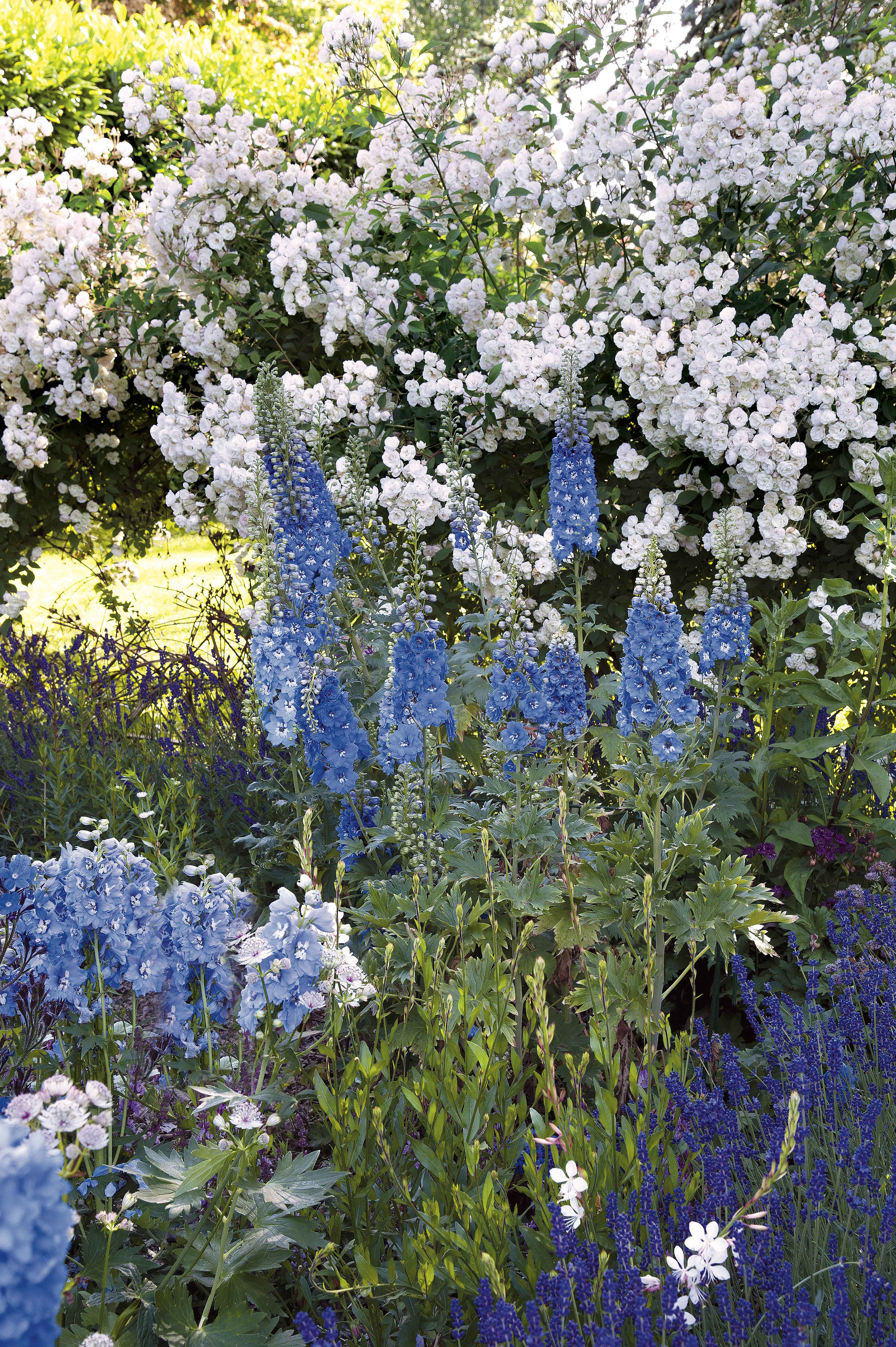
Seagull Rose – Delphinium ‘Royal Aspirations’ – D. ‘Sunny Skies’ – Astrantias – Lavenders –
Discover other Delphinium - Larkspur
View all →Available in 0 sizes
Available in 0 sizes
Available in 0 sizes
Available in 2 sizes
Available in 1 sizes
Available in 2 sizes
Available in 3 sizes
Available in 1 sizes
Available in 1 sizes
Available in 1 sizes
To crown a meadow garden
Large larkspurs work wonders in natural gardens to create a setting that is both exuberant and ephemeral. An old-fashioned impressionist tableau that is relatively simple to achieve, best installed at the back of the garden: preferably choose delphiniums that belong to the belladona group, ‘Volkerfrieden‘ with a bright gentian blue, which are less compact, shorter (1.20 m), and also more ramified with a somewhat bushy habit. Simply plant them in clusters of 3 young plants alongside Peonies, Sea Thistles, Galega, Oriental Poppies, Cornflowers, Speedwells, Daisies, Gaillardias, Campanulates, Cosmos, large bearded irises, Columbines, Lupins, or other delphiniums. Cheerfully colourful, this wild-looking corner will welcome all sorts of insects.
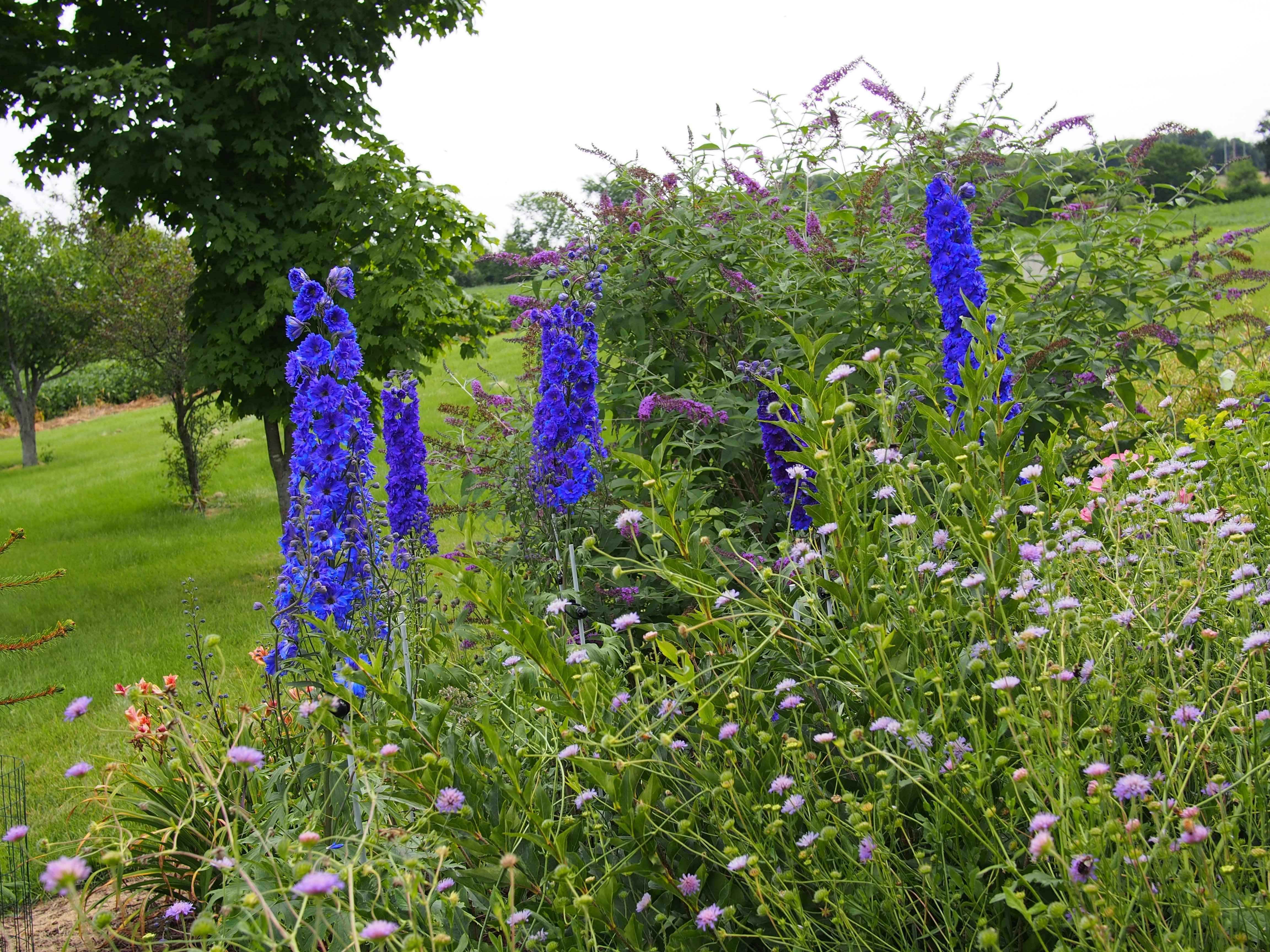
– Delphinium ‘Pagan Purple’ –
Read also
Plant and succeed with delphiniumsTo create a blue tide
We love delphiniums in monochrome, and for good reason! Larkspurs offer a wide palette of colours, but they are among the most beautiful blues in the garden. True blue, sky, gentian, lavender, or purple-violet (Delphinium ‘Black Night’, ‘Blue bird’), mix them to create a azure massif. Delphiniums will thrive against glaucous or purple foliage, such as that of a berberis or a pennisetum setaceum ‘Rubrum’. By completing the scene with other highly floriferous plants like a geranium ‘Rozanne’, mauve nepetas, aconites with intense blue inflorescences, the airy gypsophile ‘Rosenschleier’, or clematis, you will achieve an ocean of flowers.
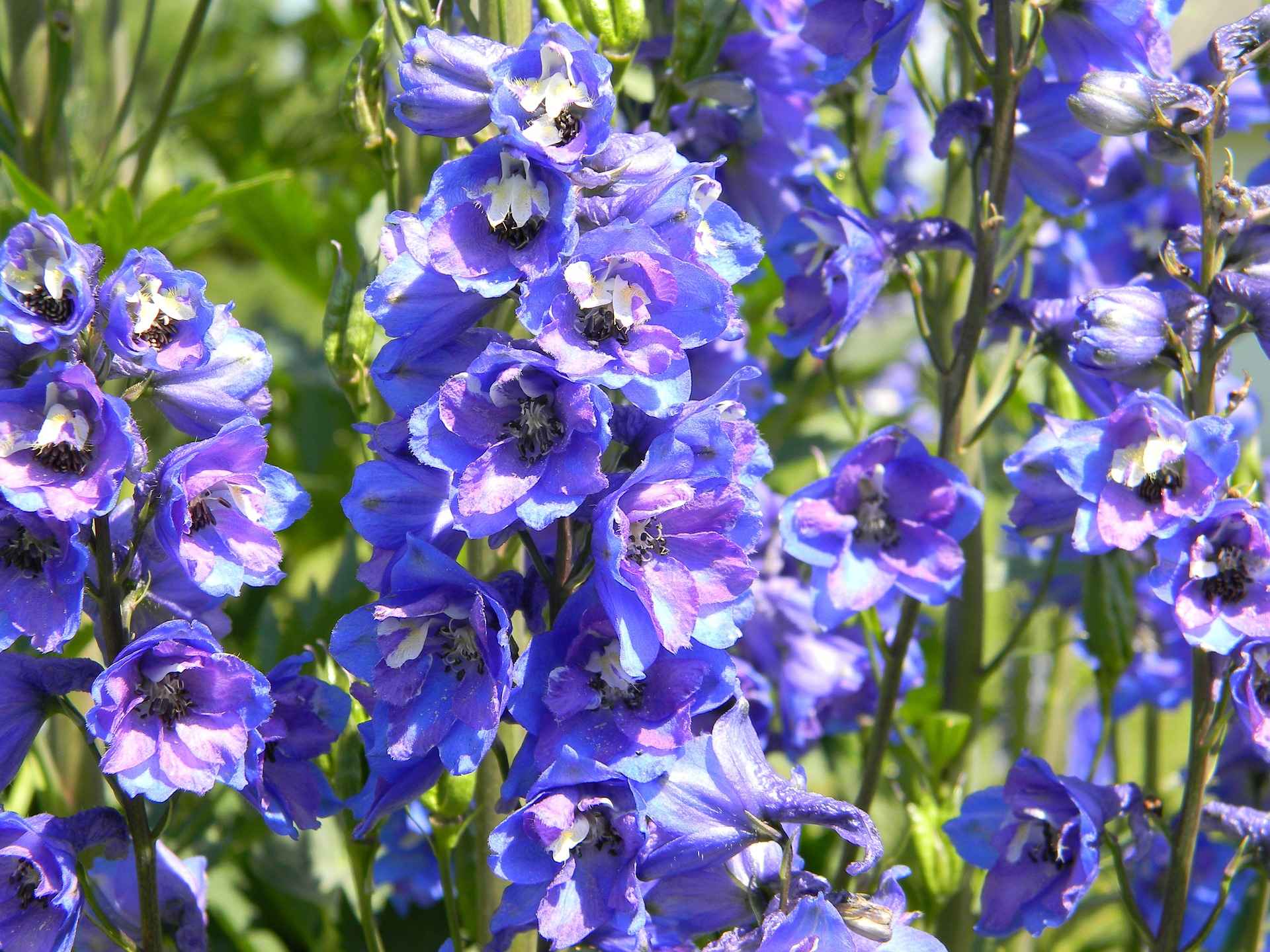
Yellow/blue-purple for a contrasting harmony
We play with complementarity by bringing together the blue-violet colour of delphiniums with yellow-toned herbaceous perennials such as Thalictrums, Tanacetum, golden Achilleas, or yellow-orange Hemerocallis. They will be enhanced by a backdrop composed of Hop or golden mock orange, shrubs with green-yellow leaves, or climbing roses with yellow flowers. You will particularly highlight the blue shades of the delphinium in contrast with the aniseed flowers of Alchemilla or Ruta graveolens, and the glaucous foliage of Euphorbias and Hostas.

To add depth to an English-style mixed border
Composed of a wide variety of perennial plants, the mixed border is typical of English gardens. Plant climbing roses or shrub peonies in the background; they will create a happy marriage with the delphiniums. The low and medium varieties (D. ‘Bellamosum’) will suit narrow flowerbeds well, while the taller ones will be stunning at the back of the border. Pair them with other perennials such as campanulate, geraniums, foxgloves, Oriental poppies, or bulbous plants like ornamental garlic or steppe lilies.
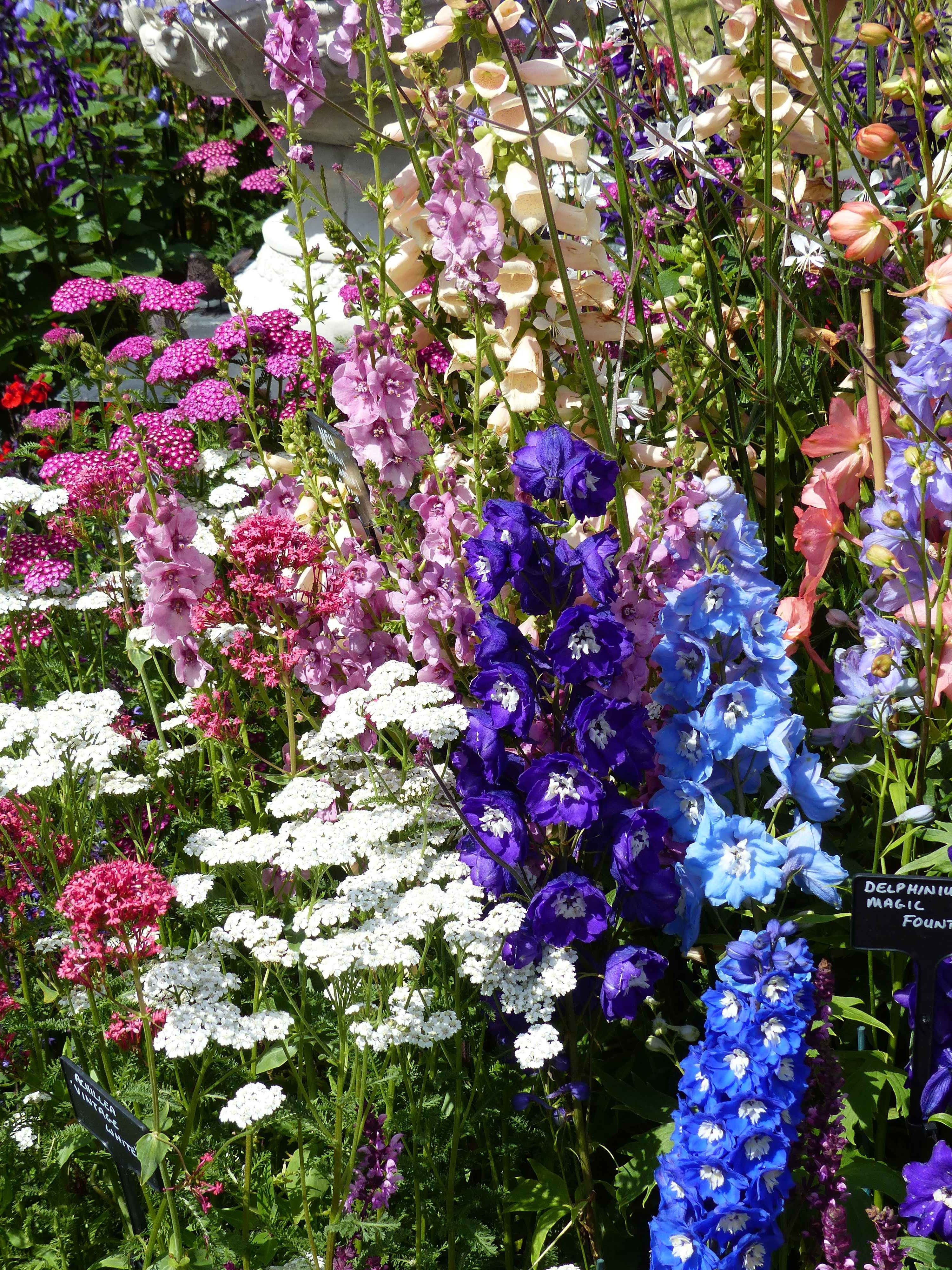
In a pot on a sunny terrace
To enhance your terrace and add flair and originality to your pots, don’t hesitate to install compact port Delphiniums. More than in the ground, potted delphiniums require fertilisers and sunlight (at least 5 hours a day). Plant them alone or alongside other sun-loving perennials or annuals, dwarf campanulas, verbenas, hardy geraniums, coreopsis, small lobelias, petunias, or salvias that will dress the base and complement each other beautifully.
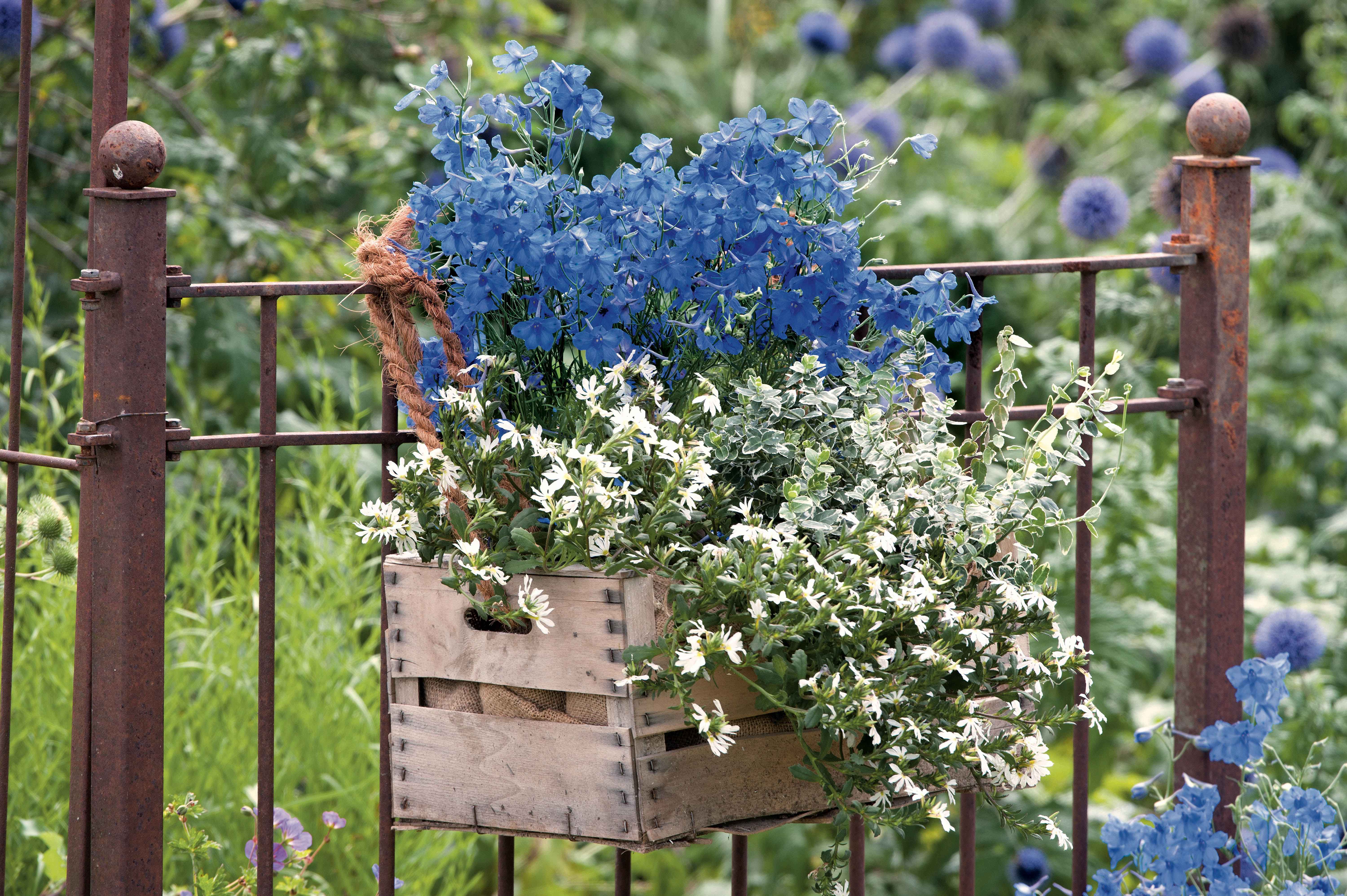
In a bouquet
Make delphinium bouquets! Their blue, white, or pink flowers last a long time in a vase if picked just before they bloom. Mixed with gypsophila, dahlias, irises, or roses, they create beautiful country-style bouquets. Extend the charm by allowing them to dry upside down; they will brighten your home in a dried flower bouquet.
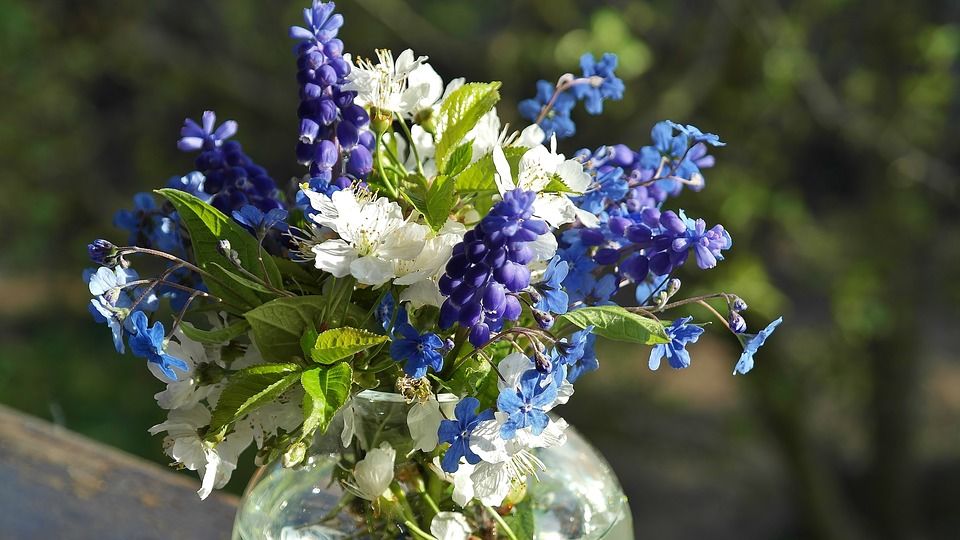
- Subscribe!
- Contents































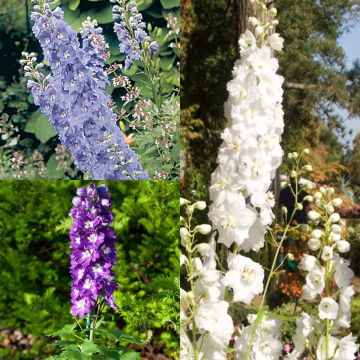
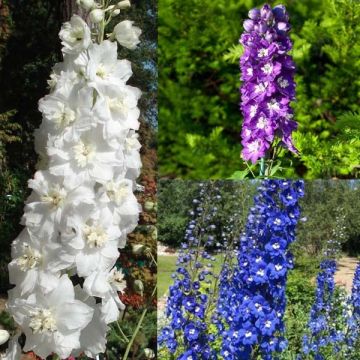
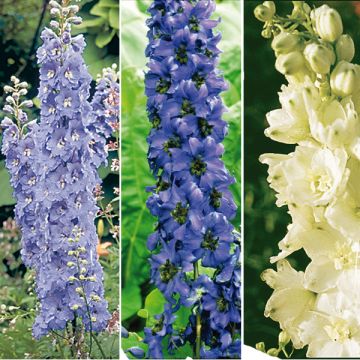
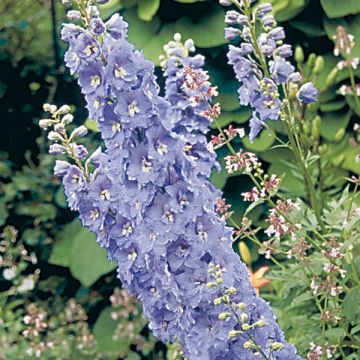
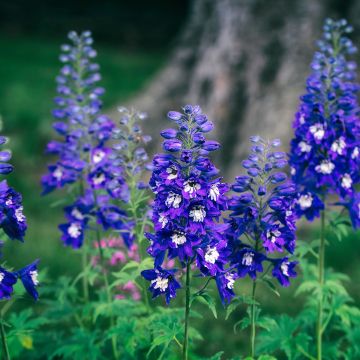
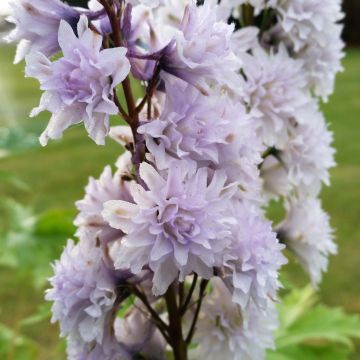
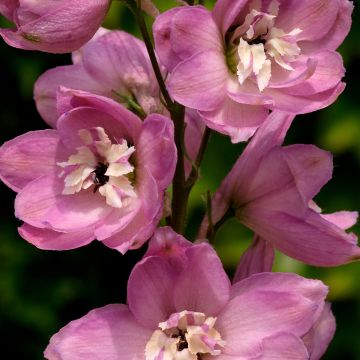
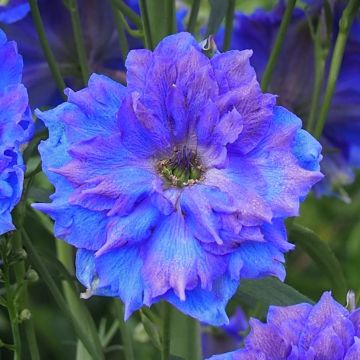
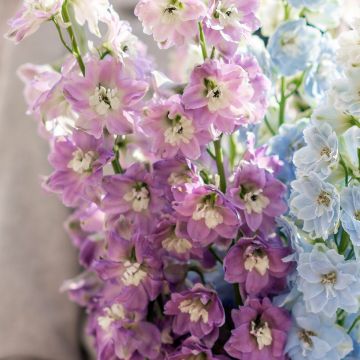

Comments